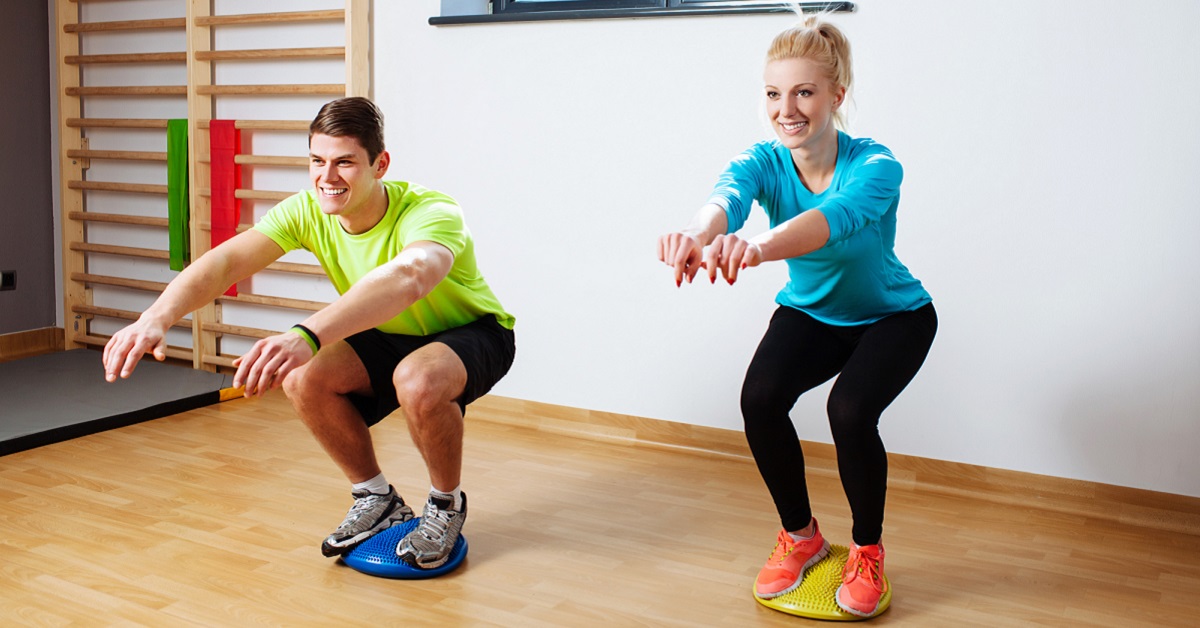Although you’re well aware of your five senses – hearing, vision, touch, taste and smell – you have a sixth sense that you may never have heard of. (And no, movie fans, it’s not “seeing dead people!”)
This sixth sense is not a movie plot gimmick, much less supernatural, but a very real and essential part of your good health. You see, your sixth sense prevents you from tumbling out of bed at night. It keeps you from falling when you walk.
It even enables you to bring a fork to your lips – without missing! — and enjoy a delicious bite of food. And it helps you keep track of the positions and movements of your arms and legs so you can move safely and easily.
If your sixth sense isn’t functioning well, you’re in trouble. . .
This sixth sense is called proprioception. It’s basically your sense of body awareness, or the sense of where your body is located in its spatial surroundings.
Unfortunately, proprioception, like your other five senses, deteriorates with age. When this happens you’re more liable to fall and get seriously injured. But the latest research reveals falling is not the only peril of losing your youthful proprioception.
It goes to the heart of dementia, too.
In addition to regulating your body’s physical movements, research shows that proprioception also helps regulate memory and brain function. In fact, the research shows that if you can maintain better proprioception then you maintain a better memory as you age.
Keep your brain working better and reduce your risk of falls, bruises and broken bones? That’s a win-win in my book. So how exactly do you improve proprioception? It’s easier than you might think.
Exercise Muscle-to-Brain Communication
By now, if you’ve been following the research on ways to improve your memory and brain function, you’ve read about how exercise can support and boost your intellectual abilities. In particular, some scientists believe that the more you improve your aerobic fitness, the more you help your neurons stay healthy.
And one important way exercise helps memory, some researchers believe, is that it boosts your proprioceptive sense.
It has this effect because your proprioception depends on threads of cells in your muscle tissue. They’re called spindles, and they contain nerves that keep track of your muscle activity and send that information to your brain so your body knows where it is in space. For example, the transmitted information communicates if your muscles are staying still, getting longer or contracting.
Within the larger muscles in your legs, these spindles are sparse – communicating more general data about movements and positioning. In contrast, the parts of your body that need to operate in precise, closely regulated movements and activities, like your tongue, vocal cords, hands and fingers, contain a denser collection of spindles that send more data to the central nervous system and allow more finely tuned muscle control.
Along with the spindles, tendons contain what are called Golgi tendon organs that communicate muscle tension. As a muscle contracts and grows shorter, these organs transmit data to the brain about the force involved in the contractions, which also aids your proprioceptive sense.
Bettering the Brain
The proof for all of this is very interesting. Here’s one example: an animal study at Rutgers University shows that training for better physical control of the body – in this case, the animals trained on rotating rods that developed their coordination and balance – produces more benefits for brain neurons than merely doing aerobic exercise on a running wheel or treadmill.1
It works on humans, too. Analyses performed on people show that honing your balancing skills can enlarge your hippocampus (a critical brain memory center that shrinks with age)2 as well as other important parts of the brain.3
Impressively, a growing body of evidence also shows that you can boost your brain power quickly by working on nothing more than your proprioception sense.
For example, a study in Germany looked at this phenomenon in people between the ages of 19 and 65 who were trained with balance exercises – like standing on a wobbly board – twice a week. The exercise program improved their cognitive abilities significantly in three months.4
And in research at the University of North Florida, after only one session of balance exercises, people’s working memories improved measurably.5 In this study, test subjects did activities like walking along a beam, carrying objects that were awkwardly unbalanced and even climbing trees.
Practical Exercises You Can Do at Home
I’m not suggesting you take up gymnastics or tree climbing, but there are plenty of other balance building exercises you can do to improve your proprioception. One of the easiest is to join a Tai Chi class.
Tai Chi is a traditional Chinese exercise that entails slow movements that resemble slow dance moves. At the same time, a Tai Chi session emphasizes balance and body control. The results of a study at the University of South Florida that involved researchers from China shows that doing Tai Chi three times a week can actually keep your brain bigger and spur better brain function.6
Best of all, Tai Chi can be practiced by just about anyone. I’ve even heard of seated Tai Chi exercises for those who are too ailing to stand.
I think it’s safe to say that most of never think about proprioception. It just seems to be a natural physical ability that takes care of itself. But as these studies make clear, paying a little more attention to this “sixth sense” and making small efforts to improve it can provide you with big brain benefits for years to come.







